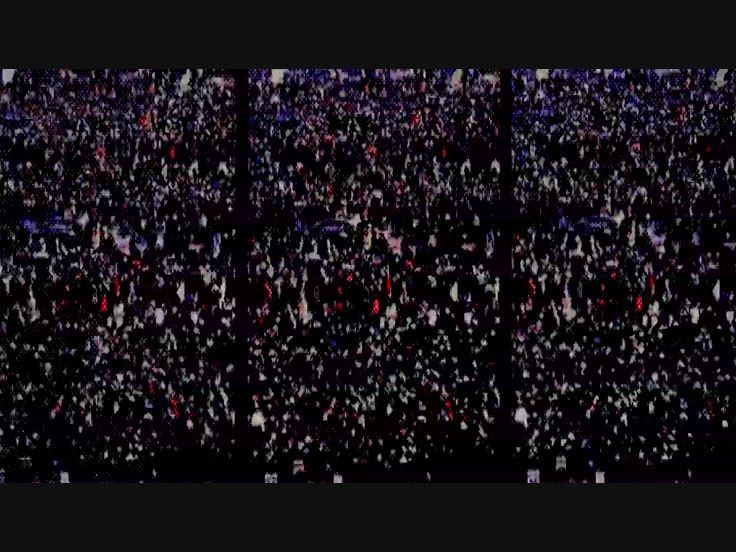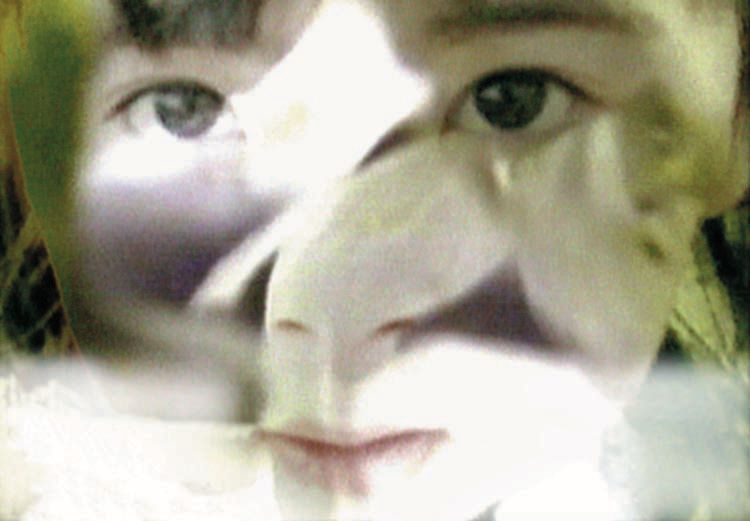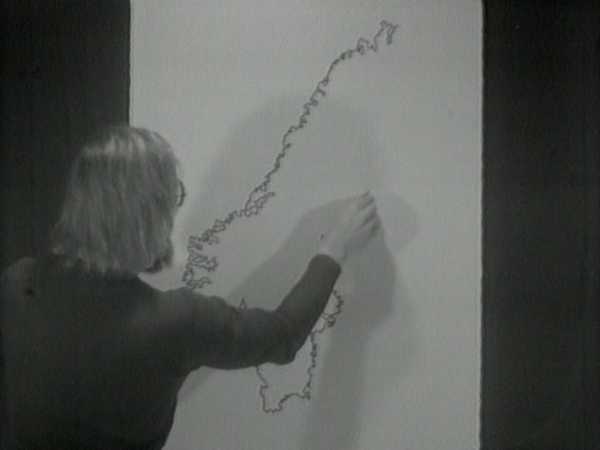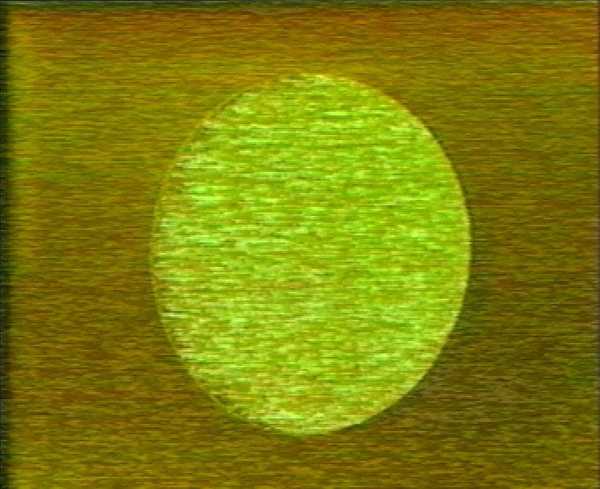
A Fly on the Distributor's Wall
What Do Distributors Do?
In 2017, film historian, writer and researcher Helen Westerik acted as a fly on LI-MA's wall to discover the nature of the unique and urgent work done by media art distributors like Video Data Bank, Filmform, Re:Voir, Light Cone and LI-MA. Read her report below.
After studying, watching and working in film for half my life now, I wanted to find out more about the section I love most: experimental film and media art. Like most of us, I navigate my way through (media) art and experimental film via galleries, museums and, most of all, film festivals. All three play a vital role in showcasing artist’s work, whether they are their most recent creations or thorough and focused retrospectives.
Especially for emerging talents, exposure at festivals or galleries means an entrance into the art and festival world and provides legitimacy that cannot be won just by showing work online. No artist would just upload work onto a website and expect the world to find it; most, rather, will use their already existing networks, social media and the like. However, the use of a well established platform with connections in the art and film world would heighten visibility as well as credibility.
So What Do Distributors Do and What Exactly Do They Distribute?
This is where a distributor comes in to the story. A distributor can provide artists with this platform through their own network and website, but also by linking to other similar organisations and thus widening the horizon. For me, it provides me with a chance to see new and exciting work of people I haven’t heard about yet. I still remember how puzzled I was after my first abstract animation and how thrilled after discovering new names.
I had the opportunity to eavesdrop on a meeting of the Northern Countries (Sweden, Finland, Iceland and the Netherlands were present) in Stockholm. Not only could I listen in on current topics, problems and plans, but I also got to ask them tons of questions as well. The following is a result of these conversations as well as my own exposure to different distributors through research and festivals.

What Are We Talking about Here?
In the wide gap between commercial movie theatres and art galleries, there is a vast section of art that is hard to pin down, yet has been tremendously influential in the development of both fine arts and cinema. It has many names and many forms – media art, time based art, experimental film, video art, electronic art and artists’ moving image – and its materiality ranges from born-digital, video and installation art to 16 millimetre film.
From Fernand Léger’s Ballet Mechanique, and registrations of Fluxus events from the likes of Yoko Ono, Nam June Paik, and George Maciunas, to the Stedelijk Museum Schiedam Winter 16/17 exhibition by Dutch media artist Geert Mul, these artists have stretched the boundaries of moving images. They occupy a unique space, where formal and technical experimentation go hand in hand with, or maybe even facilitate, different narrative strategies. The organisations representing them, their distributors, occupy an equally unique space in both what they do for the arts, for the artists and the audience.
Outside of an art or festival context, it will be hard to either see or show experimental moving art. Most cinemas already shy away from showing short films regularly, and non-linear, non-narrative or otherwise experimental content is seldom part of the program. It is hardly ever part of the umwelt of contemporary cinemas. And that’s largely due to a different system of distribution.
While film distributors focus on mostly commercial tasks, like financing, marketing and bookings, media art distributors do this, plus a variety of specific tasks that require intensive research and competence, such as curating or conservation of art works. Lacking government funding, (commercial) film distributors have to operate on a commercial level: they need to break even at the very least.
Many of the media art distributors work on a not-for-profit basis, with or without governmental funding, making them less dependent on sales and perhaps therefore more fit to find the perfect match for a festival, a museum or a gallery. It might very well be the fact that they operate in the space between cultural institutions, film foundations and commercial distributors that defines the way they care for their material and their artists. Bridging the gap between the commercial and the purely cultural, speaking the language of the artist and the art venue, they have a unique modus operandi.
A Highly Selective and Very Brief History of Distribution
In my talks with the Nordic distributors and through my own research, I tried to find common ground in the naissance of all the distributors I know (which is only a fraction of the ones in existence). There seems to be two groups: the ones that come from tape and the ones that come from celluloid, celluloid obviously predating tape. It’s also interesting that more than a few started out as a filmmakers’ or artists’ organisation.
Many distributors originate from the tape era: the 1970s, when the first consumer video cameras were released and taping was no longer for TV stations only. Artists started exploring the possibilities of the medium itself and the artistic and political potential of recording events. Out of this brand-new medium came the platforms to facilitate the artists.
A fine example of history captured by a distributor is the role VDB plays in preserving media activism. It came to my attention through the Here Come the Videofreex documentary made my John Nealon. Video Data Bank (VDB) in Chicago (Ill.) hosts, rents out and restores the vast heritage of the Videofreex: a video collective that made videos (about 1500 of them), installations and media events, after the first consumer video recorders were commercially available. Their work includes recordings of Woodstock festival, Yoko Ono performances and also a Black Panthers demonstration, an incredible rendition of a tumultuous era. VDB now has these 1500 tapes, many of them in long obsolete formats. At around $400 a tape, they are slowly unearthing a treasure trove of historical material by transferring it to digital.
Originating from the celluloid era, Filmform, the Swedish foundation for experimental film and video, has a slightly different mission and history. Svensk Experimentfilmstudio was the original name for the member organisation, which later changed its name in Arbetsgruppen för film. Founded to promote and produce experimental film after the cultural isolation around WWII, they are one of the oldest organisations for moving image arts. One of the early members was renowned filmmaker Peter Weiss, who came to Sweden as a refugee and made his first films in the 1950’s. In 1991 Filmform collaborated with the Anthology Film Archive in New York and its founding father and avant-garde hero Jonas Mekas.
Filmform focuses on Sweden-based artists, though other Nordic countries are represented in their catalogue as well. Talking about achievements, director Anna-Karin Larsson said, “I am very proud that the Filmform collection contain works from 1924 till today. That gives a possibility to look back and get historical perspectives on experimental film or artist’s moving images. Today there are 850 titles by 300 artists in distribution. The reference archive is much bigger and can be researched only on site at Filmform.”
Yet, another way to organize distribution is through an artists’ association. The Finnish AV-arkki has more than 200 artists as members and over 2000 works in distribution. As an artists’ association, they have artists’ interest as the bottom line, not only by ensuring that works are spread around the globe. (The website states that they cater to over 200 world wide events.) They offer advice on legal issues and contracts, on where to be represented and under which (financial) conditions.
![]()
Helping Out Curators
Working closely with festivals, media art distributors often help the curatorial process by doing part of the research and pre-selecting works that fit the venue, a theme or a retrospective. It is precisely this role that is beneficial to curators, as it saves time and shares knowledge. Besides aiding in the selection process, distributors also mediate between artists and venues for screening fees and rights. For curators and festivals, it’s extremely helpful not to have to contact all the artists individually to negotiate about screening fees, but a distributor will also make sure that a work is in a presentable format, ready to be screened. This is not a small achievement, considering the wide variety thereof.
I personally experienced this while curating for Cinedans and compiling a program with dance dramaturg Fransien van de Putt, based on the collection of LI-MA in Amsterdam. How do you select for a dance on screen festival, sourcing from well over 3000 works? Just typing a keyword in a database helps somewhat (and is a lot of fun: I will admit to having a kid-in-a-candy-store experience with the password to all the videos). Talking about what you’re looking for, what the parameters are and what you want to communicate with your programme is, however, much more helpful. Not only does this sharpen one’s own thinking process, it also saves hours, if not days, of exploring works that have no place in your selection.
Technological Research and Preservation
Distributor LI-MA, the Amsterdam-based international platform for sustainable access to media art, is at the forefront of conservation of digital heritage. Working closely with both artists and museums, they invest in technology and knowledge to preserve born-digital art works. Decades of preservation of video and media art have led to a vast body of knowledge of different technologies and strategies. However, Internet based art is problematic in brand-new ways: sometimes generated live, or with input from users, it’s hard to emulate in a fixed form.
Yet the increasing importance of internet art – as well as the accelerating speed with which technology develops – makes it ever so important to develop strategies to do so. LI-MA has on-going research programmes in which they explore the artistic and technological demands of preserving and showing media art. They have worked with Dutch media artist Joost Rekveld to re-interpret two works by Steina and Woody Vasulka, two ground-breaking pioneers of video art. This research focuses on notions of authorship, authenticity, autonomy, documentation, memory, continuity and liveness.
Two Parisian distributors, Re:voir and Light Cone, focus on another kind of preservation: they safeguard the legacy of experimental film making through the decades. Both have a treasure trove of early avant-garde works that they digitise and preserve. Re:voir is a label that distributes early and contemporary experimental film. For instance, they keep Dada films available, and contextualise them with booklets that always accompany their DVDs.
Light Cone works on digitizing their collection, making fragile originals (on 8mm) available for online watching, without the wear and tear that through screening celluloid by its very nature alters its materiality.

Conclusion
I asked Gaby Wijers of LI-MA, Hanna Maria Anttila from AV-Arkki and Anna-Karin Larsson from Filmform what they think their most important contribution is. It comes down to helping the artists out with legal issues, negotiations and spreading their work. For curators, it’s all about a deep knowledge of what’s in the catalogue and how that would fit their purposes. For the world at large, it’s preservation of works in all formats and forms.
To put it bluntly, there’s nothing an artists’ moving image distributor does that no one else could do or does. Artists, especially as they become more famous, could take care of their own rights and distribution. Galleries can sell work and generate exposure. Also, festivals can create a huge amount of exposure. Lawyers can advise about legal issues. Curators can find their own art works and films.
Yet, to have organisations that do all of this and more is priceless. There are no other institutions in which the knowledge, the technical, legal, promotional, organisational expertise is coupled with a deep understanding of the material. This leads to a practice in which not just the distribution, but also the conservation of media art works is of the greatest importance. All the knowledge invested so far, will assure that we can still access these artists’ work in the future. We need the caretakers of the past, with a keen eye for the future.
Thumbnail image: Nam June Paik, Global Groove, 1973 (videostill) | Header image: Peter Bogers, Fingers, 1992 (installation)
Videostills in descending order:
Geert Mul & Michel Banabila, Crowds, 2014
Semiconductor, Where Shapes Come From, Fiber Festival, Amsterdam, 2017
Merel Mirage, Blood in Blossom, 1995










